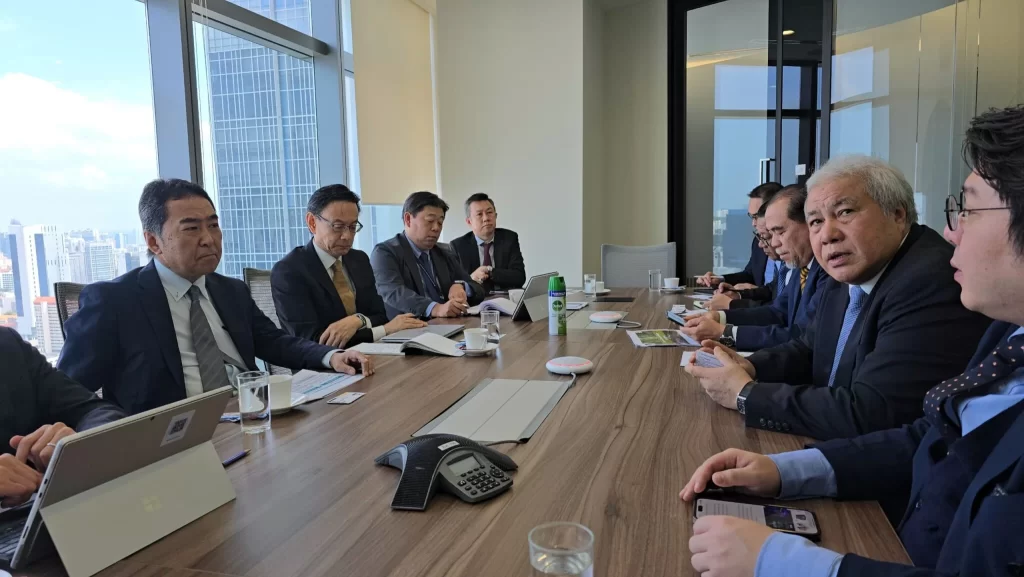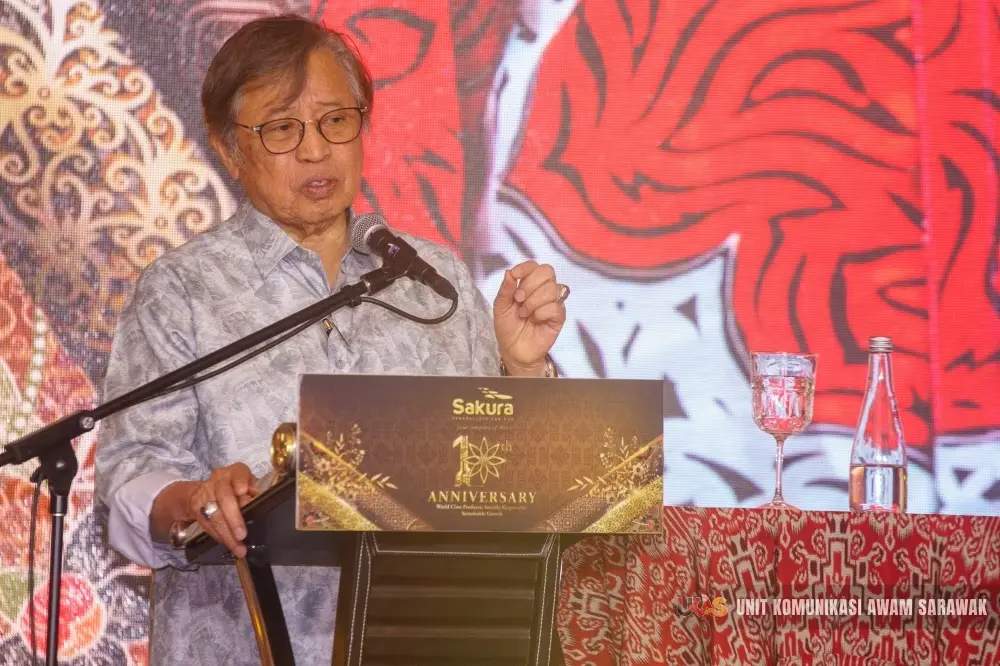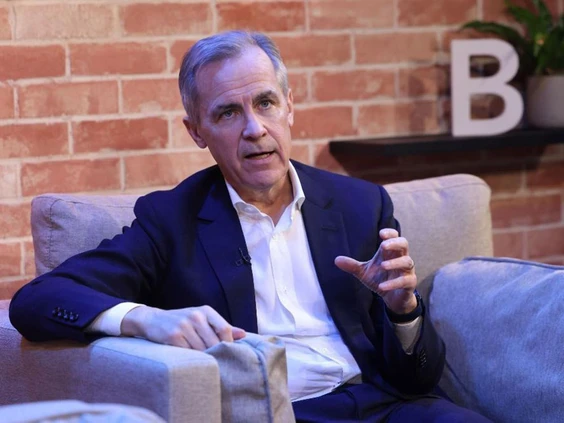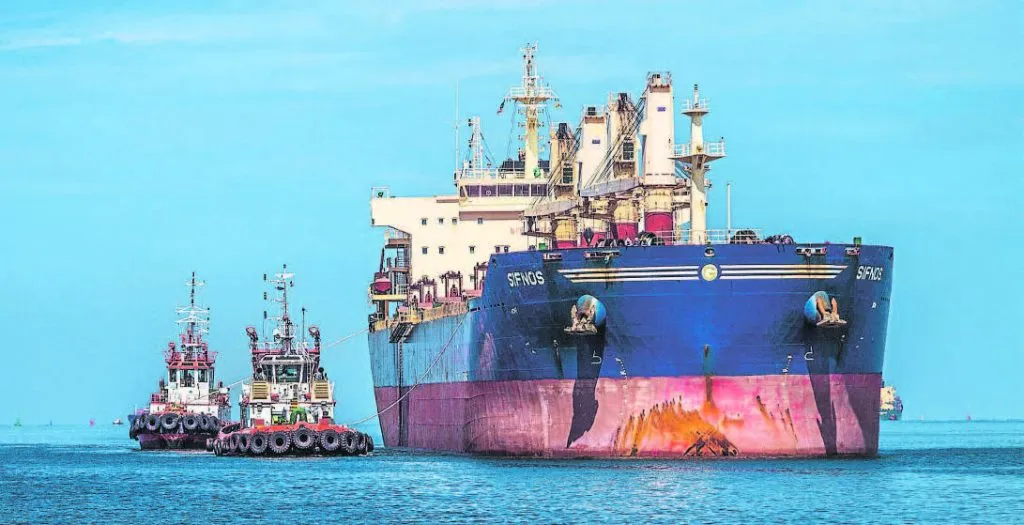Singapore leads Asian peers in attracting foreign investments: Report

SINGAPORE – Singapore is the most attractive country in the region for foreign investments, but it falls behind some advanced economies in terms of environmentally friendly and socially inclusive growth, according to a new index. The Milken Institute’s Global Opportunity Index ranked Singapore first among its Asian neighbours in 2023, and 14th among the 130 countries studied globally – up four places from 2022. Hong Kong at 15th and Japan at one spot below were the other two Asian economies in the top 20 globally. Denmark came in first globally, with Sweden dropping to second, followed by Finland in third. The United States moved up one spot to fourth. Dr Maggie Switek, the Milken Institute’s senior director and the report’s lead author, told The Straits Times that Singapore’s climb up the league table was due to relatively strong economic growth. Its high position was also driven mainly by its strength in “business perception”, which measures the ease of doing business and the regulatory framework facilitating contract enforcement and dispute resolution. It also fared well in the “institutional framework” category, which assesses the extent to which a country’s institutions safeguard the rights of investors and the safety of their assets. The country led the way in the subcategories of investor rights and transparency. “It means that overall investment conditions remain strong, which is also reflected in Singapore’s capital inflows. The strength of investor rights coupled with its relatively low business constraints mean that investors should feel comfortable operating in Singapore,” Dr Switek said. Foreign direct investment (FDI) inflows to Singapore reached a record high of US$141.2 billion (S$189 billion) in 2022, up from US$131.1 billion in 2021, noted a United Nations report. This made the country the third-largest FDI recipient worldwide after the US and China. Singapore also accounted for almost two-thirds of flows to Asean countries. “However, the country could do better on its indicators related to environmentally friendly and socially inclusive growth, which are reflected in its relatively low ranking in ‘future environment for growth’,” said Dr Switek. Singapore scored below the average of advanced economies in the “economic fundamentals” category, which captured macroeconomic performance, workforce talent and efforts to create a resilient and sustainable economy and society. This was largely due to its relatively weak performance in the “future environment for growth” sub-category, which includes measures such as air pollution and the proportion of women in government. Dr Switek said Singapore also ranked below some of its regional competitors such as Japan and South Korea in this area. The Milken index is based on 100 indicators classified into five categories – business perception; economic fundamentals; financial services; institutional framework; and international standards and policy. The variables within the five categories measure all angles of a country’s investment potential, including economic openness and performance, business constraints and workforce talent and diversity. Data sources include the World Bank, the International Monetary Fund and the United Nations. Malaysia offered the best investment conditions among emerging and developing Asian economies. It ranked 27th globally, ahead of Thailand at 37th and 39th-placed China, which lost some appeal to investors due to rising geopolitical tensions with the US. The report noted a continued shift in investor sentiment in favour of Latin American countries as capital inflows to China turned negative in 2022 for the first time since 2015. Since then, Latin America has experienced a surge in investment inflows, with Mexico and Brazil jointly accounting for more than 60 per cent of foreign direct investment in the region. However, it noted a strong momentum behind China’s innovation economy that could rival the US and other advanced economies. The mainland surpassed the US in the annual number of scientific publications for the first time in 2019, and since then the gap has widened, it said.
Sumitomo eyes enhanced participation in S’wak’s green projects

SINGAPORE: Sumitomo Corporation (Sumitomo) has expressed its interest to have greater involvement in Sarawak’s green projects. Among the projects are biomass bamboo, renewal energy, carbon capture, utilisation and storage (CCUS), green metals, chemical and derivates. Deputy Premier Datuk Amar Awang Tengah Ali Hasan welcomes Sumitomo to explore and invest in the bamboo plantation project. He also invited Sumitomo to look into the new economic sectors including the green and digital economy. Earlier today, Awang Tengah, who is also Minister of International Trade, Industry and Investment, met with Sumitomo Corporation Asia and Oceania Group chief executive officer (CEO) Keigo Shiomi to discuss more collaboration opportunities. Sumitomo has several collaborations in Sarawak and is currently developing a hydrogen related production project in Bintulu. Meanwhile, also in attendance during the meeting were Sarawak Timber Industry Development Corporation (STIDC) general manager Zainal Abidin Abdullah, STIDC advisor Datuk Hashim Bojet, InvestSarawak CEO Timothy Ong, and PUSAKA Capital Sdn Bhd CEO Mohamad Nor Topek Julaihi.
Sarawak welcomes Singaporean investors

KUCHING: The Sarawak government has consulted with several Singaporean investors to explore investment opportunities especially in renewable energy, green energy and digital economy projects in the state. Deputy Premier, Datuk Amar Awang Tengah Ali Hasan who was in Singapore yesterday engaged with representatives from UOB Group, Eastspring Investments, TWO Family Office and Chemsains Konsultant Sdn Bhd. Awang Tengah welcomes the interest from these companies and expressed his appreciation towards their interests in Sarawak, in line with the Post Covid-19 Development Strategy 2030 (PCDS 2030) for the state to be a thriving society driven by data and innovation. During his visit there, he also met with Kuok Meng Wei who is representing Kuok Group, one of Singapore’s largest conglomerates to discuss potentials in green and renewable energy investment projects in Sarawak. For the record, Kuok is also the chief executive officer (CEO) and managing director of K2 Strategic, an international developer, owner and operator of hyper-scale digital infrastructure assets in the technology sector. Also in attendance were Sarawak Timber Industry Development Corporation (STIDC) general manager, Zainal Abidin Abdullah, STIDC’s advisor, Datuk Hashim Bojet, Invest Sarawak chief executive officer, Timothy Ong and PUSAKA Capital Sdn Bhd chief operating officer, Mohamad Nor Topek Julaihi.
The Netherlands announces subsidies for €998,330,000 for production of renewable hydrogen with a electrolysers

The Netherlands announces subsidies for €998,330,000 for production of renewable hydrogen with a electrolysers. Do you want to produce renewable hydrogen with an electrolyser? And do you have plans for this? Then you will soon be able to apply for a subsidy via the OWE scheme again. To help you prepare your application, we provide you with an overview of the changes compared to the OWE in 2023. What’s different in 2024? Requirements for the installation 🔥 What about we co-host a webinar? Let’s educate, captivate, and convert the hydrogen economy! Hydrogen Central is the global go-to online magazine for the hydrogen economy, we can help you host impactful webinars that become a global reference on your topic and are an evergreen source of leads. Click here to request more details Ranking of your application Your maximum subsidy amount Feasibility of your project New mandatory appendix: supply of renewable electricity purchase Realizing your installation
Bintulu’s Samalaju Industrial Park nets RM111.73b approved investment since 2008 launch, says Sarawak premier

BINTULU, March 5 — Premier Tan Sri Abang Johari Openg said last night that Samalaju Industrial Park, which was launched by the then prime minister Tun Abdul Ahmad Badawi in 2008, has attracted an approved investment of RM111.73 billion to date. He said RM12.07 billion out of the total has gone towards commercial production, with direct employment for 9,293 workers. “The potential is there. We have a list of companies which are going to invest in the park, with an anticipated investment of RM15.66 billion,” he said during the 10th anniversary of Sakura Ferroalloys Sdn Bhd. He said there are also a few projects that are being enhanced, one of which is the 70km-long Bintulu-Samalaju gas pipeline that is scheduled for completion at the end of next year. “The operations of these projects will increase the distribution of gas supply to users in Samalaju Industrial Park including the combined cycle gas turbine which is currently under construction. “In other words, we are upgrading the gas supply as well as power to Samalaju Industrial Park,” he said. In his speech earlier, Sakura Ferroalloys Sdn Bhd chairman BH (Tiaan) van Aswegen said the company is in the process of constructing a new sinter plant at the site. “This US$30 million plant will be commissioned in the second half of 2024 and will contribute to further improve plant efficiencies and lower the cost base,” he said. He said a feasibility study to produce a value-added refined ferro-manganese product will be concluded by mid-year. “If the study results are positive, this might lead to a further investment of around US$100 million at Sakura,” he said, adding that studies to produce by-products from current waste streams, such as slag, fumes and gas, are being pursued.
Mark Carney sees ‘massive disconnect’ in green finance rhetoric

There’s plenty of money to be made by investing in the green energy transition, and financial professionals who say otherwise aren’t paying attention to the facts, according to Brookfield Asset Management Ltd. chair Mark Carney. There’s a “massive disconnect” between what some of the heavyweights of global finance are saying and the wave of money flowing into green projects, Carney, who’s a former governor of the Bank of Canada and Bank of England, said on Jan. 17 at the Bloomberg House in Davos, Switzerland. Article content Article content The comments follow a pivot in the messaging from bankers and asset managers, who have started using global summits to remind governments they’ll only back the green transition if there’s a profit to be made. It’s a mantra that’s being repeated at Davos. Speaking at a panel earlier on Wednesday, hedge fund billionaire and Bridgewater Associates founder Ray Dalio said “there’s this notion of ‘we should we should we should,’ but there’s the fact of who has the money, what is the size of it and what are their motivations.” Carney said that tracking green investment flows shows there’s enough motivation among the holders of capital to back the transition. In 2023, investors plowed 1.8 times as much into clean energy as they did into fossil fuels, according to the International Energy Agency. And the US$1.8 trillion that was spent globally on clean energy last year is expected to rise to US$4.5 trillion annually by the early 2030s, the IEA estimates. “That 1.8 trillion is going to make a very good returns,” Carney said. “Not every single investment, but the whole thing will make a very good investment elevator pitch.” Last year, many investors in traditional green assets lost money, as wind and solar producers were pummelled by higher interest rates. The S&P Global Clean Energy Index ended 2023 down more than 20 per cent, and has slipped a further 9.5 per cent in January. By comparison, the S&P 500 rose 24 per cent last year and is little changed so far in 2024. Carney said transition finance is an area in which investors stand to generate profits. “If you focus on going where the emissions are, you get paid for helping to solve climate change, and that’s now the reality,” he said. “You get paid more for doing that in the advanced world than you do in the developing, in emerging world, something we’ve got to fix with policy and finance, but because you get paid, you can do both: have a massive impact and, and make returns for your investors.” Carney, who served as governor of the Bank of England between 2013 and 2020, also commented on the U.K.’s green agenda, including a perceived retreat from climate policies by Prime Minister Rishi Sunak. “What I didn’t like — at least what it looked like to me — is that policies were being taken off the table without, certainly without replacements being put in and they were being done for purely political signalling purposes,” he said. “That’s what it appeared. And that isn’t the right environment to keep investment focused and flowing as much as it should. And it’s also, it’s just not good climate policy.” Article content Carney also touched on the outlook for the next few COP climate summits. What happens in Brazil, which will host the 30th Conference of the Parties to the United Nations Framework Convention on Climate Change in 2025, “is critical for the climate,” he said. Brazil’s ecological transformation plan “is significant in and of itself, but potentially very significant” in that “it can help create whole new financing flows around biodiversity, around nature at a scale that’s material,” he said. Carney also is United Nations Special Envoy for Climate Action and Finance and chair of Bloomberg Inc. Together with Michael R. Bloomberg, the founder of Bloomberg News parent Bloomberg LP, he co-chairs the Glasgow Financial Alliance for Net Zero.
Ports in Sarawak as key drivers for trade, economic activities

Six major ports function as crucial transhipment hubs that play integral roles in the state’s supply chain by NURUL SUHAIDI PORTS facilitate trade, transportation and economic growth. They are key connectors between land and sea, allowing for the efficient movement of goods, people and resources. As a crucial connection between sea and land movement, ports support economic activities and growth for the respective state, as well as the country. One of the factors that is expected to boost the economic growth of Sarawak is the Pan Borneo Highway (PBH), a significant infrastructure initiative that will transform transportation and accessibility in Sarawak. The 786.41km highway stretches from Teluk Melano down south up to Miri in the north and is expected to improve connectivity to the interiors of Sarawak. Transport analyst YS Chan said PBH Sarawak will be beneficial to strengthen and allow more shipments of raw material through the ports in Sarawak. “With larger areas in Sarawak made more accessible by the highway, there will be new developments such as agriculture and manufacturing, resulting in more shipments of raw materials and manufactured goods through Sarawak’s ports,” he told The Malaysian Reserve (TMR). As for the peninsula, Chan said the port in Singapore is likely to benefit more from the PBH than the ports in Johor Baru, Kuantan and Port Klang. “Singapore’s role as an ‘entrepot’ is phenomenal, as it is super-efficient, and much of our exports especially down south are sent through Singapore,” he added. According to Kuching Port Authority (KPA), the first organised port in the state, the PBH will help expedite the movement of goods into and out of Kuching Port in respect to other parts of Sarawak. On the possibility of new ports in Sarawak, KPA said the state government is conducting a feasibility study on a new deep-sea port at Tanjung Embang, Kuching. In addition to that, Rajang Port Authority (RPA) GM Helen Lim Hui Shyan said Rajang Port will take measures to complement the new highway infrastructure, which is set to provide a vital link between the hinterland and the state’s inner core. The improved connectivity can lead to increased trade, investment and business activities. In Sarawak, six ports act as a major cargo-handling transhipment ports which are the integral parts of its supply chain. They are the Bintulu, Kuching, Miri, Samalaju, Rajang and Tanjung Manis Ports. Bintulu Port Lying on the western coastline of Sarawak, near the Bintulu city, this port is the major maritime gateway to Eastern Malaysia, comprising the regions of Sabah, Sarawak and Labuan. This deepwater seaport handles petroleum and its derivatives, as well as liquefied natural gas (LNG), crude oil, liquefied petroleum gas (LPG), urea, fertilisers, timber and palm oil. Over 7,000 ships visit the port annually, and it has a handling capacity of more than 69 million tonnes and more than 390 twenty-foot equivalent unit (TEU). Operated by Bintulu Port Sdn Bhd (BPSB), Bintulu Port’s location is crucial since it connects Borneo Island to other countries like Indonesia and the Philippines, where it is expected to become a major LNG trade hub. About 76% of the cargo handled at this port comprises liquid bulk. It has also witnessed appreciable growth in container traffic in recent years and handled around 348,000 TEUs in 2018. Due to its strategic position, it is expected to emerge as the region’s significant LNG trade centre. The container-handling facility and the oil wharf are now being expanded. Soon, new cargo compositions like those containing aluminium, pulp and paper, biodiesel, downstream forest products and agricultural products will pass through Bintulu Port. It is a multipurpose facility comprising three berths for handling conventional cargo, two berths for handling bulk and breakbulk, seven jetties for accommodating LNG tankers and an expansive container terminal. BPSB’s existing hinterland extends as far north as Limbang and Lawas in Sarawak and to Sabah and Brunei. In the other direction (south-east), BPSB’s coverage extends as far as Pontianak in Kalimantan, Indonesia, and Kuching. Kuching Port The KPA was established in 1961 under the Port Authorities Ordinance 1961. This port has grown to become the state’s premier port, serving numerous shipping lines connecting it to the regional hub ports. Kuching Port is equipped with two terminals, namely the Pending Terminal with an annual capacity of 2.9 million tonnes and the Senari Terminal with an annual capacity of seven million tonnes. Both have convenient access to highways and coastal routes, as well as to all major towns in Sarawak. They are also situated in close proximity to industrial estates which facilitates smooth cargo movement. Kuching Port’s main operations are handling containers, general cargo and roll-on/roll-off cargo (Ro-Ro) and vehicles. Among the top export commodities KPA deals with are steel, iron and metal products, groceries, food and beverages, dry bulk cargo, consumer products, vehicle parts, hardware and building materials, electricals and electronic apparatus, wood and timber products, as well as live animals. Serving as a trade gateway for the southern region of Sarawak, Kuching Port facilitates imports and exports. It complements other ports like Bintulu, Samalaju, Rajang, and Tanjung Manis Ports serving the central region, while Miri Port serves the northern region. Kuching Port implemented the Vessel Traffic Management System (VTMS) in 2023 and it plans to expand its port capacity to handle more cargo, for example, by adding a Ro-Ro yard, free zone, wharf, warehouses and container yard. KPA looks to install two new quay cranes next year. To keep up with digitalisation, KPA will also move towards computerising more of its operations, for example, online applications via mobile devices. Miri Port This port is located at the mouth of the Miri River. Known as a shallow general cargo port, it has offshore tanker facilities at Lutong and is the largest oil export port in Malaysia. The port deals with major commodities such as iron and steel, household goods, electrical appliances, machinery, heavy tractors, foodstuff, cereals, timber or sawn timber, petroleum, petroleum products and LNG. The port also has a timber terminal, as well as passenger and general

